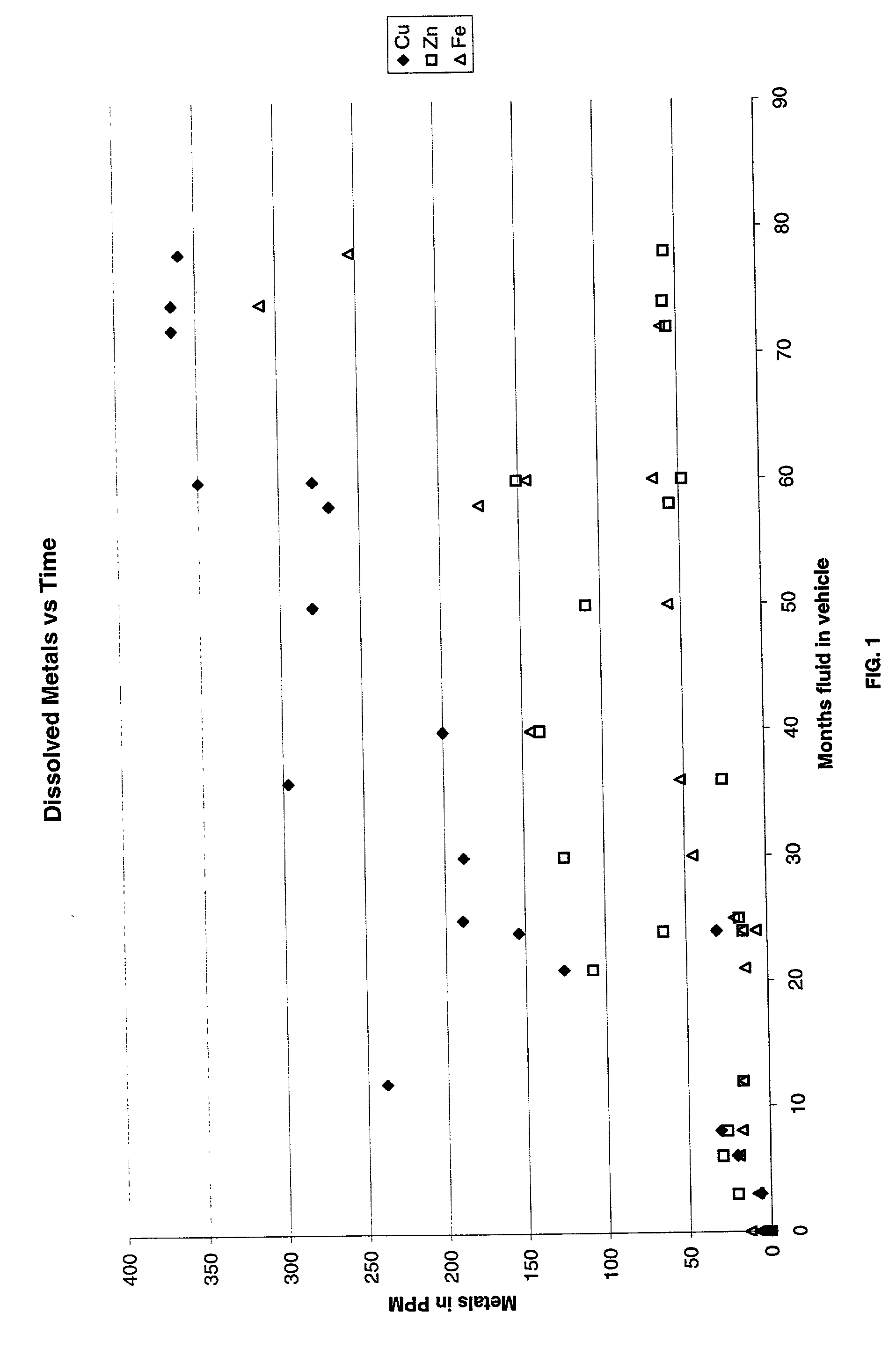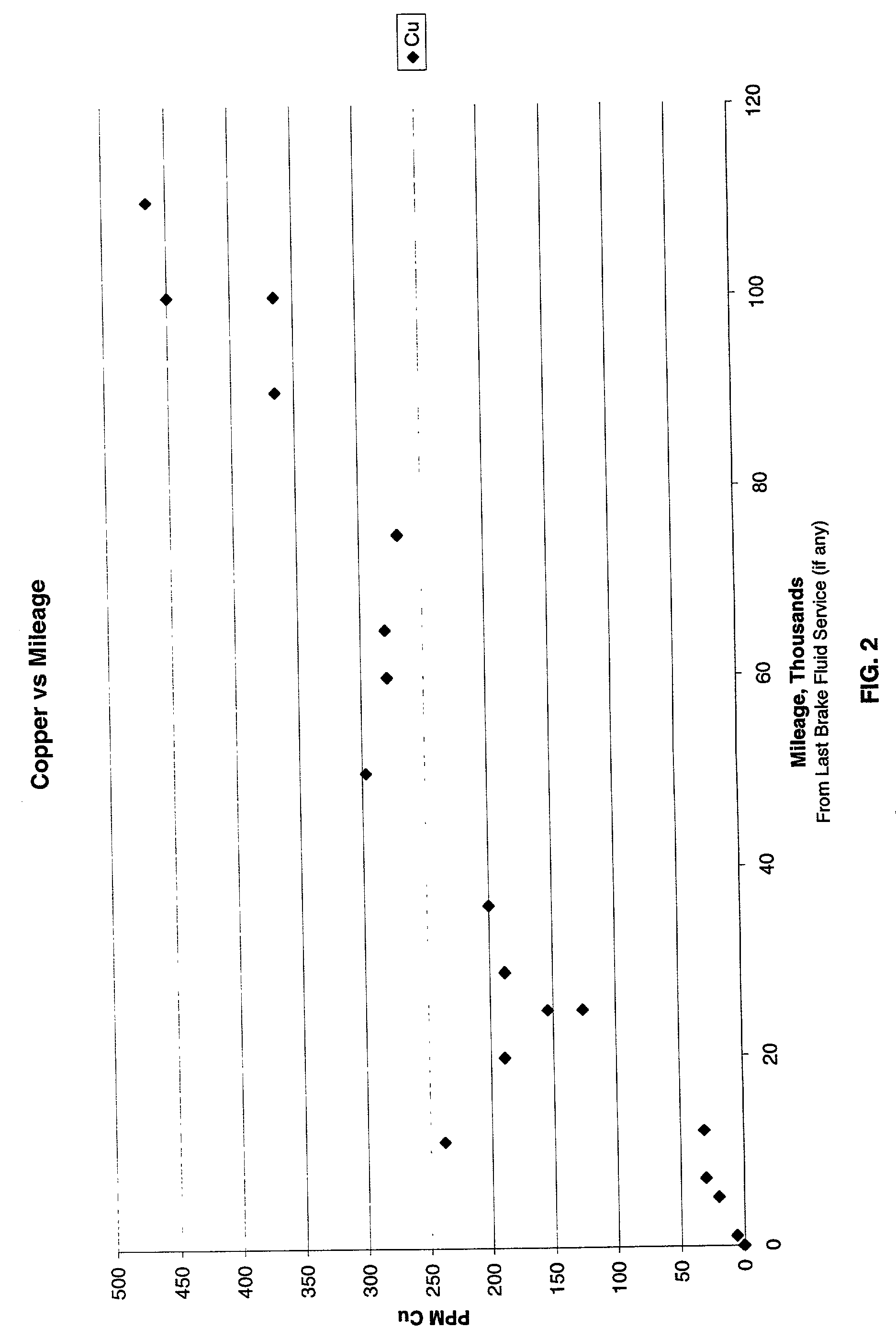Test for brake fluid age and condition
a technology for automotive brake fluid and age, which is applied in the direction of color/spectral property measurement, instrumentation, chemical analysis, etc., can solve the problems of brake fluid vaporization under hot operating conditions, complete brake failure, and reduce the effectiveness of the braking system, so as to achieve the effect of easy and economical implementation
- Summary
- Abstract
- Description
- Claims
- Application Information
AI Technical Summary
Benefits of technology
Problems solved by technology
Method used
Image
Examples
Embodiment Construction
[0026] This invention is based on the realization that the brake-fluid concentration of copper, the principal metal previously disclosed as being predictably correlated to the degradation of the fluid's boiling point and reserve alkalinity, is also indicative of the fluid's service age and / or mileage; that is, the vehicle's virtual age. Accordingly, this correlation between service age and / or mileage and copper concentration is advantageously used to estimate the condition of the fluid and establish maintenance schedules based thereon.
[0027] Most brake lines consist of steel lined with a copper alloy and represent the largest surface area of metal in contact with brake fluid. A typical light-duty vehicle uses about 14 meters of such tubing with an inside diameter of about 2.5 mm, for a total internal surface area of about 1,200 cm.sup.2. Therefore, corrosion of these lines contributes relatively large amounts of copper ions to the fluid. The master and slave cylinders include steel ...
PUM
 Login to View More
Login to View More Abstract
Description
Claims
Application Information
 Login to View More
Login to View More - R&D
- Intellectual Property
- Life Sciences
- Materials
- Tech Scout
- Unparalleled Data Quality
- Higher Quality Content
- 60% Fewer Hallucinations
Browse by: Latest US Patents, China's latest patents, Technical Efficacy Thesaurus, Application Domain, Technology Topic, Popular Technical Reports.
© 2025 PatSnap. All rights reserved.Legal|Privacy policy|Modern Slavery Act Transparency Statement|Sitemap|About US| Contact US: help@patsnap.com



